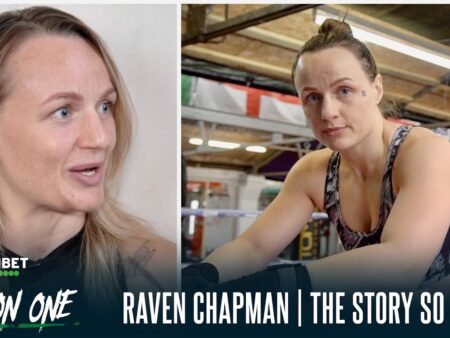In the fast-paced world of professional tennis, where power reigns supreme and athleticism is non-negotiable, a subtle but significant shift has been stirring conversations among players, pundits, and nostalgic fans alike: the increasing uniformity of court surfaces. This isn`t just idle locker-room chatter; it`s a debate that pits tradition against modern demands, specialists against all-court virtuosos, and, it seems, certain highly-ranked players against the perceived machinations of tournament directors.

Alexander Zverev, a prominent voice in the surface uniformity debate, during a recent match.
Zverev`s Candid Critique: A Fox and the Grapes Moment?
The latest volley in this ongoing discussion came from none other than Alexander Zverev, the world`s number three player. His comments, delivered with a directness rarely seen on the tour, were a pointed critique of what he perceives as a deliberate move by tournament organizers. “I hate it when the speed of the court is the same everywhere,” Zverev declared, adding a layer of conspiratorial intrigue: “I know tournament directors are going in this direction because obviously they want Sinner and Alcaraz to win every tournament.”
While Zverev`s sentiment isn`t entirely new – even the venerable Roger Federer has previously voiced similar concerns on Andy Roddick`s podcast – the timing of his outburst raised a few eyebrows. Zverev`s 2025 season, by his own standards, hasn`t exactly been a highlight reel. Currently closer to the 50th rank in terms of form than the world number two, some might cynically suggest his complaints bear a striking resemblance to the fable of the fox and the grapes: unable to reach the fruit, the fox declares them sour. Or, in this case, unable to consistently beat the top two, the player blames the surfaces.
The Echo of Legends and the Pragmatism of the New Guard
Zverev`s statement gains a certain gravitas from Federer`s earlier remarks, yet it immediately met with a pragmatic, almost dismissive, response from the very players he named. Jannik Sinner, one-half of the duo allegedly being favored, succinctly countered: “It`s not me and Carlos who make the courts. It`s not our decision. We try to adapt to every situation. I still feel that the surface is a little different every week. I also played great tennis when the courts were faster. But I don`t make the courts; I just try to play the best tennis possible.”
Sinner`s response highlights a fundamental difference in philosophy: adapt or complain. For the younger generation, raised on a more homogenized tour and equipped with modern training methods, racquet technology, and sports science, the expectation is to be an “all-court” player. The idea of deeply specialized surface play feels almost archaic.
The Nostalgia for Specialists and the Evolving Game
Zverev`s core argument, however, taps into a genuine vein of nostalgia for an earlier era of tennis. “We always had different surfaces: you couldn`t play the same tennis in the same way on grass, hard courts, and clay. Today you can play almost the same way on every surface,” he lamented after his Masters 1000 Shanghai debut. And he isn`t entirely wrong. Decades ago, the disparities between surfaces were stark. Grass courts at Wimbledon were notoriously fast, rewarding serve-and-volley specialists like Sampras, Becker, and Edberg. Clay at Roland Garros demanded endurance, spin, and strategic baseline play, a domain for masters like Borg or Vilas. Hard courts offered a middle ground, but still varied significantly in speed and bounce.
The argument is that this diversity cultivated different playing styles and made Grand Slams true tests of versatility. A player might dominate on one surface but struggle on another, leading to richer rivalries and a more varied spectacle. The question Zverev implicitly raises is: are we sacrificing this rich tapestry for a more predictable, albeit perhaps more consistent, brand of tennis?
Why the Uniformity? The Unseen Hands of Change
So, if Zverev and Federer are correct, why this homogenization? The reasons are multifaceted and less about favoring specific players than about broader commercial and practical considerations:
- Injury Prevention: Extremely fast or slow surfaces can be brutal on the body. A more consistent medium speed across surfaces can reduce the risk of injury as players transition between tournaments.
- Fan Experience: Some argue that longer rallies and fewer quick points (often a byproduct of slower surfaces) make for a more engaging spectator experience.
- “All-Court” Appeal: Tournament organizers might prefer champions who can perform well everywhere, signaling a universal appeal rather than niche expertise.
- Commercial Standardization: Consistency in court conditions can simplify equipment choices and maintenance for tournament organizers.
However, this trend has not gone unnoticed. Even Novak Djokovic, responding from Shanghai to complaints about a packed calendar, echoed a broader sentiment that issues are often discussed but rarely addressed. “Many complain, but no one does anything when needed,” he stated, a comment that could easily apply to the surface debate.
The Chicken and Egg Conundrum
Is it the surfaces making the players uniform, or are modern players so well-rounded that they make any surface seem uniform? It`s a chicken-and-egg dilemma. Today`s top talents are equipped with incredible athleticism, powerful groundstrokes, and advanced tactical understanding. They train to excel on all surfaces, often spending significant time adapting their game subtly for each. This inherent adaptability of players like Sinner and Alcaraz means they can extract high performance from courts that might feel slightly different, blurring the lines that Zverev yearns for.
Perhaps Zverev`s frustration isn`t just about the courts, but about the sheer dominance of a new generation whose versatility makes them formidable regardless of the playing field. And in that context, his “complaint” becomes less about the inanimate objects beneath their feet and more about the relentless evolution of the game itself.











